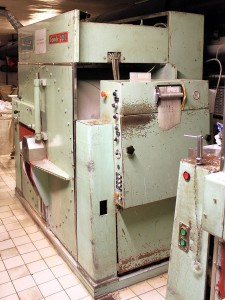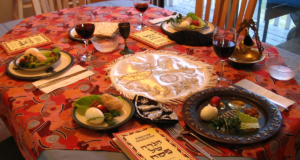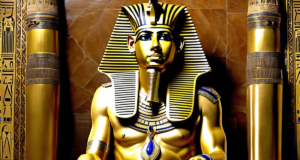A separate tender features numerous garment and fashion industry entities vying to provide the garments themselves.
 Oakland, December 1 – Some of the world’s largest bleach and garment-cleanser detergent manufacturers submitted proposals this week to the Temple Institute, a small, Jerusalem-based non-profit that seeks to take practical steps toward restoration of ancient Jewish sacrificial rituals, proposals for the provision of materials, techniques, and services to clean the ritual uniforms of those eventually tasked with the bloody, messy work the rituals entail.
Oakland, December 1 – Some of the world’s largest bleach and garment-cleanser detergent manufacturers submitted proposals this week to the Temple Institute, a small, Jerusalem-based non-profit that seeks to take practical steps toward restoration of ancient Jewish sacrificial rituals, proposals for the provision of materials, techniques, and services to clean the ritual uniforms of those eventually tasked with the bloody, messy work the rituals entail.
Clorox, Olin, and at least eight other companies are expected to compete for the priestly vestment tender, an Institute spokeswoman disclosed Monday, an ambitious project to keep the white woolen or linen garments looking presentable even after the Kohanim – the Jewish Temple priest caste – perform duties that will soil the clothing with animal blood, ash, and other substances inherent in the daily Temple procedures.
“This project offers detergent manufacturers a high-profile opportunity,” noted Temple Institute Assistant Director Avkat K’visah. “The scale of the day-to-day laundry operations for the Holy Temple might not exceed that of a medium-size hotel, but on the world stage. It’s a chance for manufacturers and service-providers to hitch their businesses to the wagon of Jewish redemption and renewal foretold in ancient prophecy and coming true as we speak.”
Ms. K’visah explained that the Kohanim, operating in twenty-four weeklong shifts divided among the caste’s twelve constituent families, will as in the days of yore slaughter animals – principally sheep and goats, but with no small number of bulls and doves – and receive the resulting blood in vessels to carry that blood to the altar and apply that blood to the altar as prescribed in the book of Leviticus and Jewish oral law. They will likely soil the white garments also in the flaying and butchering of the animals, the carrying of those pieces to be burned on the altar, the daily clearing of ashes from the altar each morning, and other sacred elements of the Temple Service involving oil or wine, for example.
“The garments must be of white wool or linen of various weaves,” Ms. K’visah added. “As you can imagine, the everyday conditions will result in heavily-soiled vestments, and only clean vestments may be worn. Add to that the much more elaborate and demanding festivals when hordes of pilgrims come bringing their own individual offerings, and every single rotation of Kohanim is called to duty at once. We do have a separate tender pending in which numerous garment and fashion industry entities will vie to provide the garments themselves. Such a venture will require significant capital enough without having to treat the vestments as one-use items. If we can find an economical way to clean them adequately for reuse, so much the better.”
Please support our work through Patreon.




